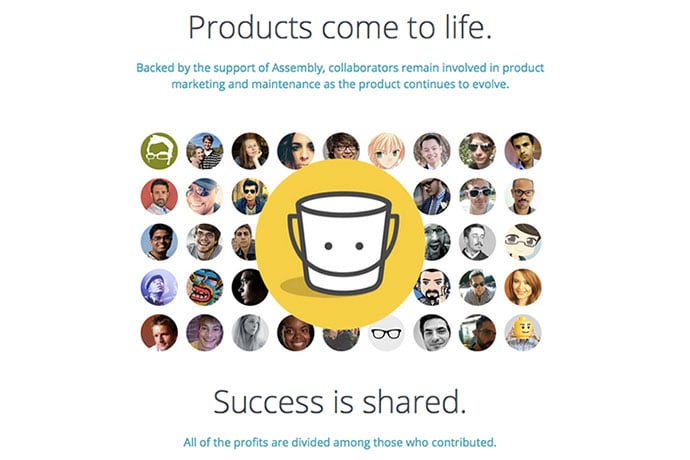Got a great idea for a startup business? Want to help someone make their idea a reality?
Where to begin to use your new design or coding skills, to practice, learn, and gain experience, can be a problem. You might have learned JavaScript but have no way to use it.
Assembly.com is a website designed to collect people with different skills to work on projects. If the project turns into a viable business, everyone who worked on the project is paid in proportion to their contributions. The website is an excellent place to look for projects where your new skills might help someone turn their ideas into software. Or turn your idea into software.
In addition to tools to collaborate, and a payment process, the website offers space on a web server to launch online projects. The entire development, launch, and payment process is transparent.
Each project turns development tasks into bounties which project members claim and work on. Payment is in App Coins whose number is determined by the project community based on the community value of the work done on a bounty. App Coins are a share of the business and become real money when a project makes revenue.
Transparency also extends to Assembly.com with a URL to let the public see into their daily process as they use the same website to maintain and build out their website business.
What makes Assembly unique is the business structure for new projects. Instead of investors, shareholders, and employees, each project is owned by the people who create the project. It’s more egalitarian startup than mainline business. People work when they want and how they want. Everyone can contribute their best ideas and work. And any financial success is shared as determined by the community that created the project.
The Assembly site also is community-owned, community-built, and community-driven.
One interesting aspect of the website, and its projects, is the fact many contributors come from places outside the United States and Europe. The site has been in existence since late 2013, has millions of people using products created on Assembly, and 159 products currently being built.
The site claims people as young as middle schoolers have contributed to projects. Because on the internet no one knows you’re a dog, joining and contributing to projects is limited only to your skills and interest. So it’s possible for kids to contribute.
One educational value for the website, aside from the possibility of contributing and practicing skills, is the ability to watch software projects evolve over time. For students and classes, it might be useful to pick a few projects and then follow their progress over the course of a semester or school year. The Assembly blog features neat projects but it’s easy to search and find others.
Following projects could lead to discussions about the complexity of software projects, how people work together (or don’t), what skills are needed, how easy or hard it is to turn an idea into software, and many other interesting questions.
Learning to code is wonderful. So is learning to design. But both skills are easily forgotten unless you find ways to apply them to a project. Assembly.com looks like a great way to use your design and coding skills and learn how software projects can evolve over time.
Learn More
Assembly.com Website
https://assembly.com
https://assembly.com/help/basics
https://assembly.com/about
https://assembly.com/terms
http://blog.assembly.com/
Assembly.com Meta Pages
This URL lets you see how Assembly manages its own business using the website.
https://assembly.com/meta/bounties

